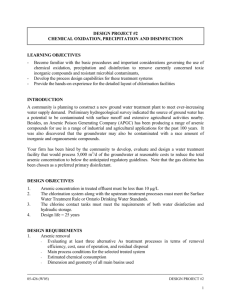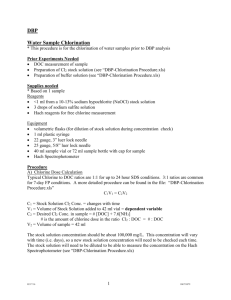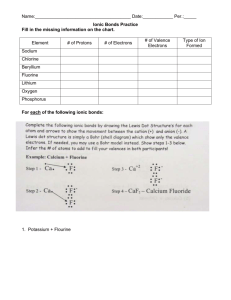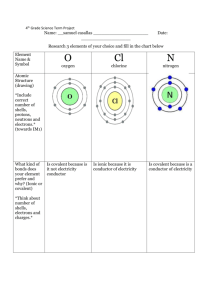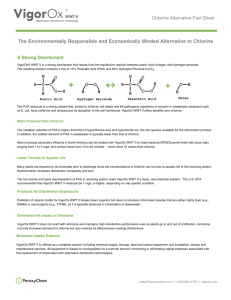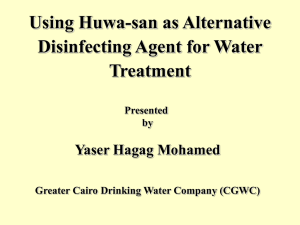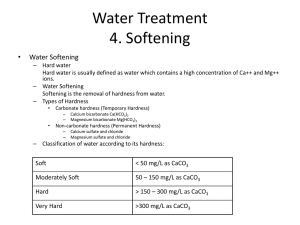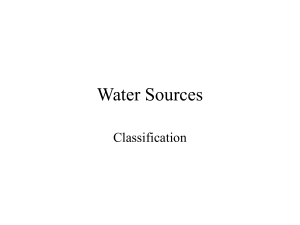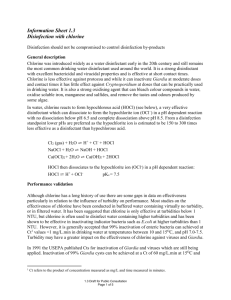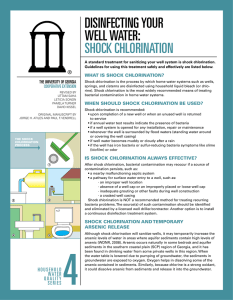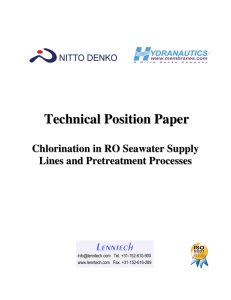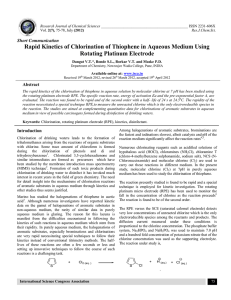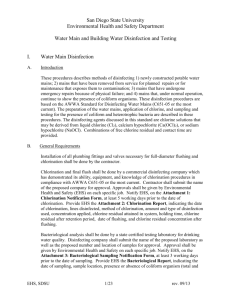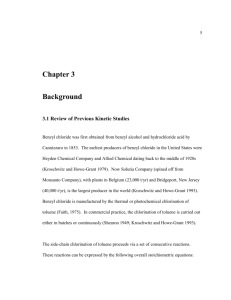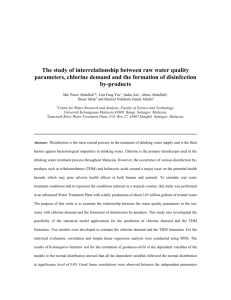Water chlorination in Slovenia
advertisement
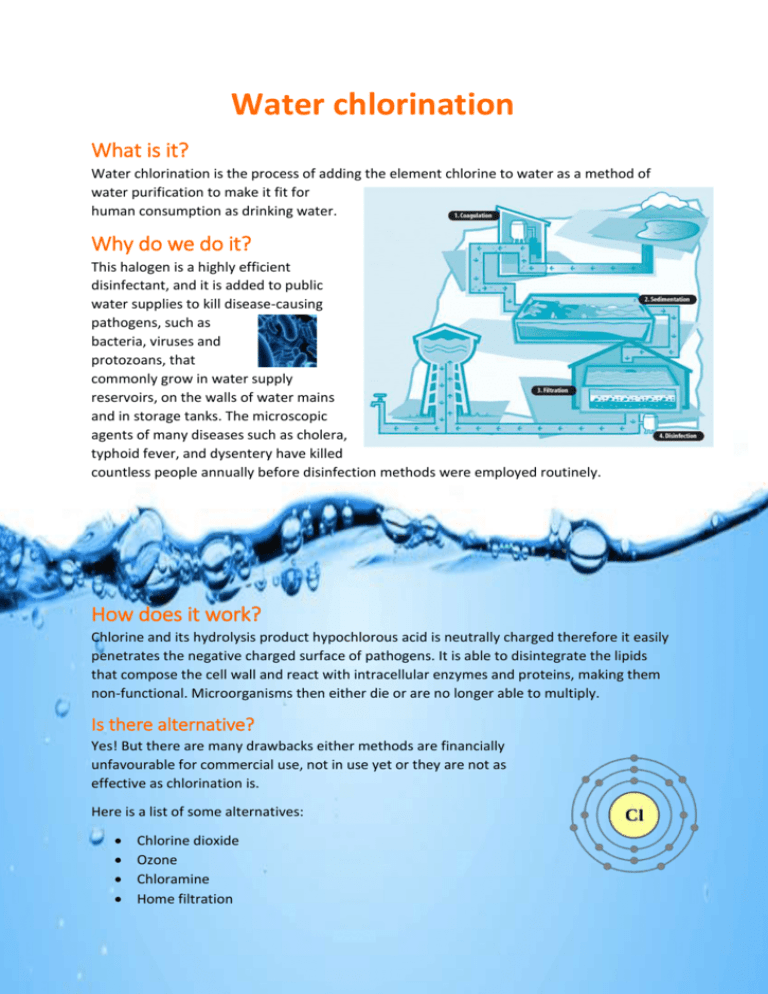
Water chlorination What is it? Water chlorination is the process of adding the element chlorine to water as a method of water purification to make it fit for human consumption as drinking water. Why do we do it? This halogen is a highly efficient disinfectant, and it is added to public water supplies to kill disease-causing pathogens, such as bacteria, viruses and protozoans, that commonly grow in water supply reservoirs, on the walls of water mains and in storage tanks. The microscopic agents of many diseases such as cholera, typhoid fever, and dysentery have killed countless people annually before disinfection methods were employed routinely. How does it work? Chlorine and its hydrolysis product hypochlorous acid is neutrally charged therefore it easily penetrates the negative charged surface of pathogens. It is able to disintegrate the lipids that compose the cell wall and react with intracellular enzymes and proteins, making them non-functional. Microorganisms then either die or are no longer able to multiply. Is there alternative? Yes! But there are many drawbacks either methods are financially unfavourable for commercial use, not in use yet or they are not as effective as chlorination is. Here is a list of some alternatives: Chlorine dioxide Ozone Chloramine Home filtration Health hazards of water chlorination Chlorine itself doesn’t cause any problems it is the Trihalomethanes that are the main by-product created from chlorination with two different methods that usebromoform and dibromochloromethane. Their effects depend strictly on the duration of their exposure to the chemicals and the amount ingested into the body. In high doses, bromoform mainly slows down regular brain activity, which is manifested by symptoms such as sleepiness or sedation. Chronic exposure of both bromoform and dibromochloromethane can cause liver and kidney cancer, as well as heart disease, unconsciousness or death in high doses. Due to the potential carcinogenicity of these compounds, drinking water regulations across the developed world require regular monitoring of the concentration of these compounds in the distribution systems of municipal water systems. The responsible organisations state: “risks to health from these by-products are extremely small in comparison with the risks associated with inadequate disinfection.” But still water chlorination does not destroy all pathogens for instance legionella, which has caused several water poisoning recently on the Slovenian coast. Chlorine can also do much harm to the bacteria that live in the large intestine, which can lead to severe consequences. Water which contains chlorine usually also tends to enter the body while having a shower, there one shower replaces drinking around eight glasses of chlorinated water. Typical signs that suggest an excessive contact with chlorine are breathing problems, a whistling sound in the lungs and, last but not least, skin irritation. A long exposure affects air passages, heart and blood and immunity system. It can also lead to accumulation of water in the lungs. Even though chlorinated water that we drink is dangerous and may cause health problems, it is much more dangerous to expose the whole body to chlorinated water, while having a shower, for example; hot baths present even a higher risk, as hot water expands pores and chlorine damages all body cells immediately when it touches them. Our skin gets dry, rough and susceptible to bacterial attacks and infections. We are subject to cancer and heart diseases because the capillaries get thinner and the cholesterol level is raised. People who are exposed to chlorinated water are also more susceptible to diseases of glands with internal secretion. Chlorine destroys proteins in the body, vitamin E that is an essential oxidant of a human body. Apart from this, it makes asthma and allergies worse and causes acne. Water with too much chlorine is genotoxic which means that it may damage a human DNA, cause foetal damage or even damage a baby’s DNA. Water chlorination in Slovenia Slovenian authorities consider this to be the most economic and simple solution. In Slovenia the maximum amount of chlorine in water allowed is 0,5 mg per litre (in the US much more), however, the pathogens often adopt to higher concentrations of chlorine and further chlorination has no effect. Water supplying system in Slovenia has an installed machine, that regulates amount of chlorine in the water, but these machines do not work all the time at all water supplying systems because some reservoirs have proved that their water does not contain pathogens. Some experts say that the impact of chlorine in water could be minimised if there were filtration systems installed.
